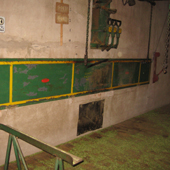
|
The drying of hops takes a lot of energyCan hops be dried more cheaply?Hops have to be dried immediately after harvest to prevent a deterioration in quality. Consequently, driers only operate during the harvest season of around 3 weeks in a year. This makes it difficult to identify energy saving measures that are cost effective. With increasing energy prices over the past few years, the department of agriculture of the Alsace region in France decided to revisit the question of energy saving measures and tasked us with investigating and evaluating the options. We decided to consider the following measures:
Of the options considered, automation of kilns, the replacement of fossil fuels with wood chips, and heat recovery from the exhaust air show promise under certain circumstances. The other measures were discarded as not worthwhile. |
Visit our French Site or German Site

